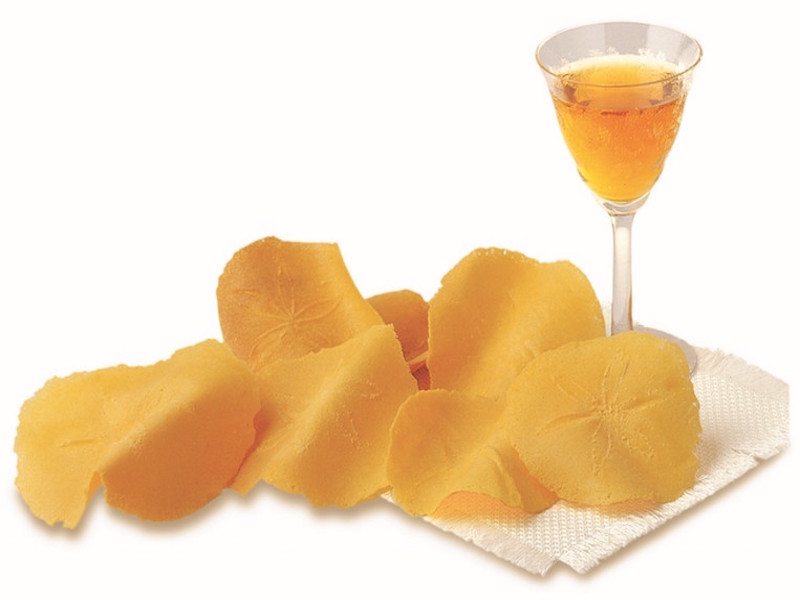Discover the history of the anise flavored brigidini cookie that is made on an iron similar to a waffle.
 Photos courtesy of Rinati’s family
Photos courtesy of Rinati’s family
The most well-known products of Italian cuisine seem to have been born from a mistake, a missing or added ingredient that became the basis of delicious recipes. A few of these symbols of the Italian culinary tradition are the Paradiso and Caprese cake or Panettone.
The same seems to have happened for the Brigidini one of the oldest sweets and Tuscan symbols. It is an institution in the region and is mentioned as in one of the oldest vocabularies in the world, the Italian Accademia della Crusca.
The homeland of these delicate, crisp and elegant cookies is Lamporecchio, a small town in the province of Pistoia. The history of Brigidini, dates back to 1300 when Sister Brigida (Bridget, now Santa), made a pilgrimage, from her country, Sweden, to Tuscany. Here, she founded the Order of the “Brigidine” and began the production of these shaped wafers. One day, while she was preparing the hosts for the Mass, she made a mistake but, in order, not to waste the precious dough, she dressed it and pressed well in the wafer mold. The result was a crumbly, thin and tasty anise cookies.
Flour, eggs, sugar and anise, are the simple ingredients needed to make golden cookies that smell beautifully of a Tuscan home. Offered, usually, at the end of a meal, with a glass of Vin Santo, brigidini are placed above napkins embroidered by the skilled hands of the weavers of Lamporecchio.
Pellegrino Artusi, in the famous “Science in the Kitchen and the Art of Eating Well” (La scienza in cucina e l’arte di mangiare bene), published in 1891, and considered the basis text for those wishing to study the history of Italian gastronomy, defined brigidini as “a very special Tuscan dessert you eat in all country fairs and festival. Cooked in hot waffles, brigidini are like a veil, light as a dry leaf, fragile as a bubble of wind “.
The tradition of these cookies would have risked being lost over the centuries but, in 800, the Rinati family began producing this sweet. At the beginning, the machinery were very rudimentary, a “pincer” to cook pasta, a “basket” of wood lined yellow paper as a container. In 1929, Rinati family began manufacturing and marketing Brigidini cookies. In the years between 1950-1960, the family sought to find an automatic machine for the production of Brigidini, and finally created a prototype from which descend the existing automatic machines.
Brigidini are now also known abroad since the small family farms in the area have decided to export this specialty. In Italy, you can enjoy these cookies with their anise aftertaste only in Tuscany (while Cantucci, for example, are available throughout the country) and this adds to their charm and curiosity in respect of a cookie with a very special history.
















Maybe a pizelle iron could work. My mother( in the mid 1960 era) used to make Brigettinis with a very heavy type of a waffle iron over a gas stove. It was very labor intensive. Pizzelle irons are electric and much easier to work with, but I’m not sure if they actually get hotter, etc. Plus the grooves a re a bit deeper. Just a thought?
My family has two of the irons that make these magnificent wafers. It’s a process to make them and we do it every Christmas.
I am looking for the irons to make brigidini. Can you recommend a website or place I can purchase these?